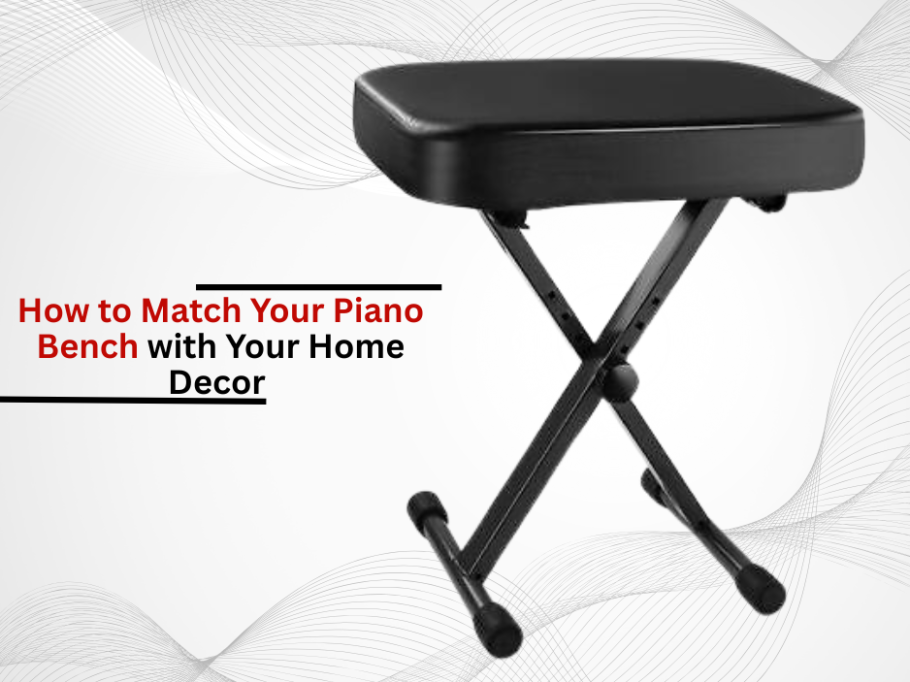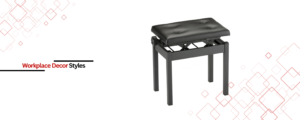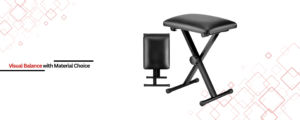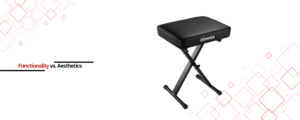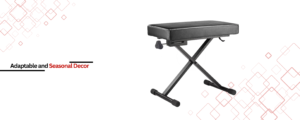A piano bench is an elegant accessory that a player uses to sit on while playing the piano. In addition to a bench being elegant, it also needs to blend well with other furniture pieces. In the following sections, we will discuss how to choose a piano bench that completely fits the rest of the room without losing the style and design.
To know more, read: Why a Good Piano Bench Matters More Than You Think
Understanding Workplace Decor Styles
Identifying Schemes of Colors and Textures:
Most sophisticated spaces have set colors, textures, and patterns to which a particular bench should be designed. For example, minimalistic spaces require benches to be in boring colors like beige, gray, or matte black. On the other hand, in traditional settings, co-ordinated wood stain or painted legs or trim furniture are a must. Design becomes paramount in other pieces of furniture.
Guiding Design Styles:
Benches that follow mid-century modern decor style are seamlessly integrated into a space. It is accented by simple and straight lines coupled with tapered legs. Rustic farmhouse-style décor favors distressed wood or wrought iron frames. Smooth geometric shapes compliment contemporary-styled spaces.
Visual Balance Starts With Material Choice
Wood Finishes and Metal Details:
Benches constructed with aged oak, mahogany, or walnut accents blend seamlessly with classic vintage or wooden interiors. Conversely, benches accented with brushed nickel or brass complement both modern and industrial decors. Mixed materials like wood tops with chrome legs also provide transitional versatility.
Fabrics and Upholstery:
Velvet and linen help soften the rigid look of modern spaces, while luxurious and traditional themes pair best with leather or faux leather. To maintain harmonious visual balance, patterned fabrics need to echo existing motifs like those found in curtains or throw pillows.
Functionality vs. Aesthetics: Showcase Best Practices
Discretion with Storage Benches:
Benches that offer concealed storage compartments help keep small spaces meticulous and neat. Minimalistic handles and slender profiles do not overpower delicate decor. Open shelving on these benches can also help showcase plants and books for more decorative flair in open-concept rooms.
Adjustable Visual Impression:
Using hydraulic levers or knobs to change the height of these elements should not disturb the theme of the interior. Foldable versions that are out of sight when not in use help maintain a tidy look.
Cognitive Approach to Design Placement and Awareness
Proportion and Scale:
With regard to the proportion of a piano and the room, the bench needs to be sized appropriately. Oversized models may dwarf petite rooms, while narrow models may seem insignificant in grand rooms. Visually, equilibrium and accessibility is further enhanced by leaving a 12–18 inch clear space around the bench; the area is designed.
Advancement Components of Design
In combination with other elements of the living room, a bench can easily serve as a statement feature or secondary focal point. Bench serves this practical function already. A bench under or over the piano becomes an attractive centerpiece and can compete with the artistry of the piano. Bold decorative cushions or artisanal throws help in adding primary focus and they are used to enhance their role as design enhancement.
Adaptable and Seasonal Decor
Alterable Without Permanent Changes:
Interchangeable accessories allow the removal of permanent alterations. Seasonal changes also become more effortless, such as knitted covers for winter or floral cushions for spring.
Light & Ambiance:
The combination of flush floor mounts and wall sconces draws attention to the bench’s contours. Soothing lights accent wood while cool LED strips emphasize metal or modern finishes.
Conclusion
Finding the right piano bench to compliment home decor is a combination of practical utility and creative design. Brands like 5 Core, Roland, and On Stage offer multifunctional products that suit different styles. Their designs are flexible, allowing musicians to integrate their instruments with evolving aesthetics as interior trends shift unexpectedly and enabling effortless creativity and comfort in spaces where these elements need to coexist.

